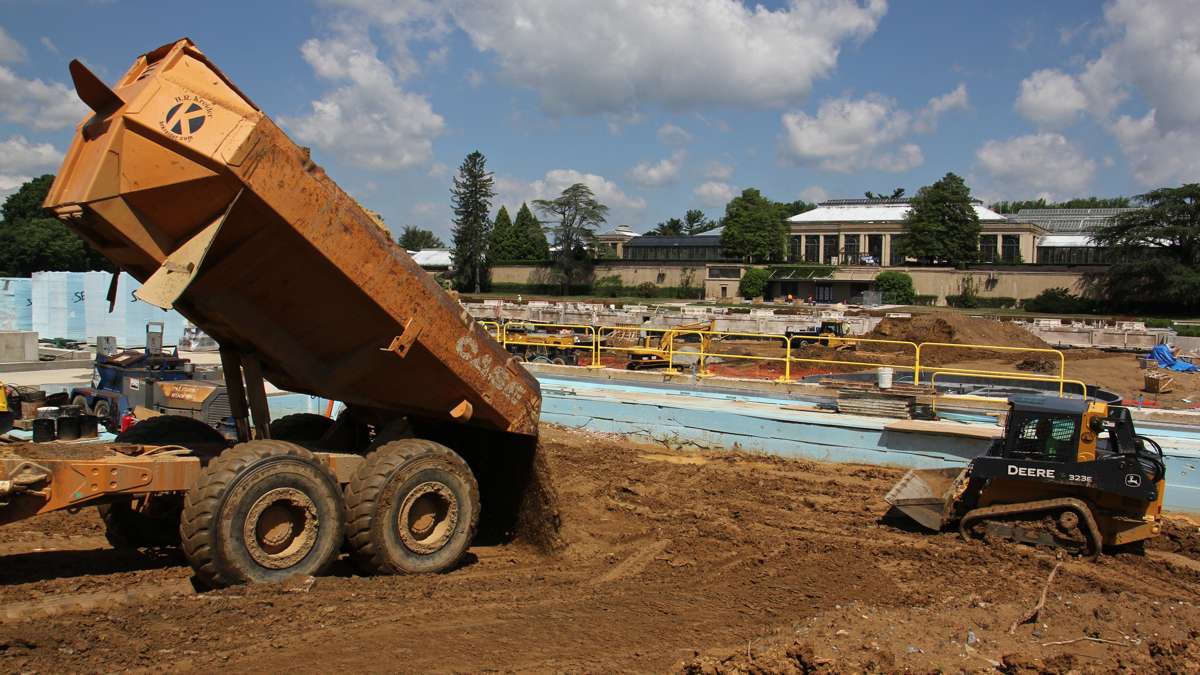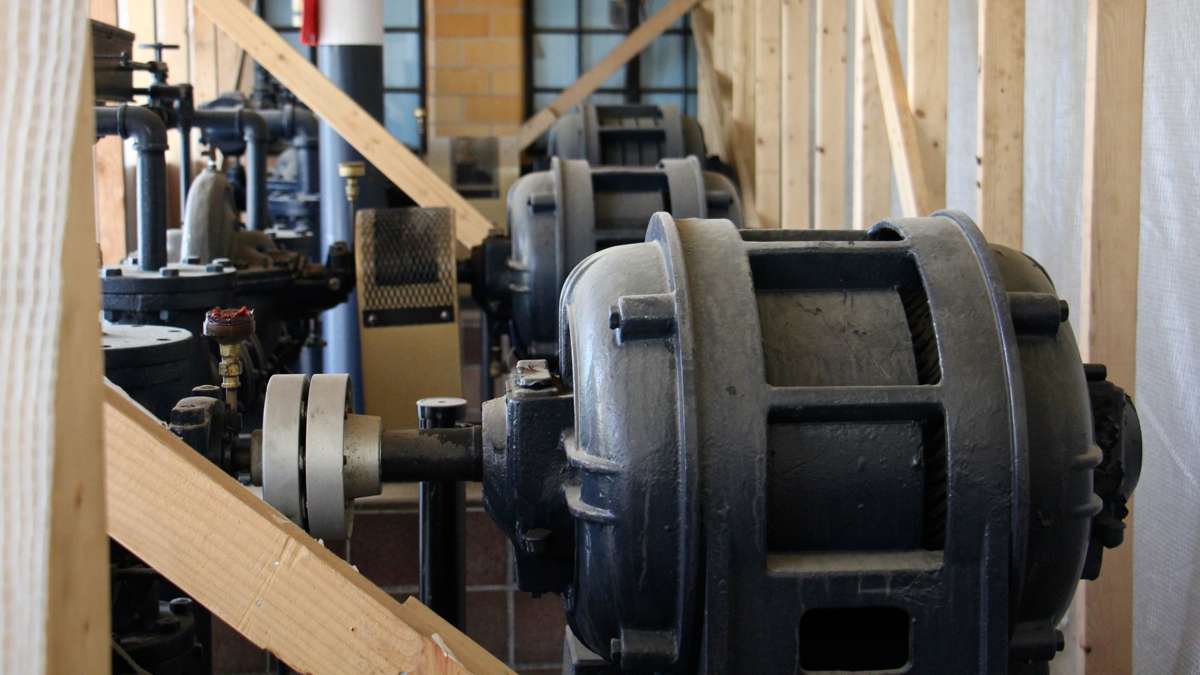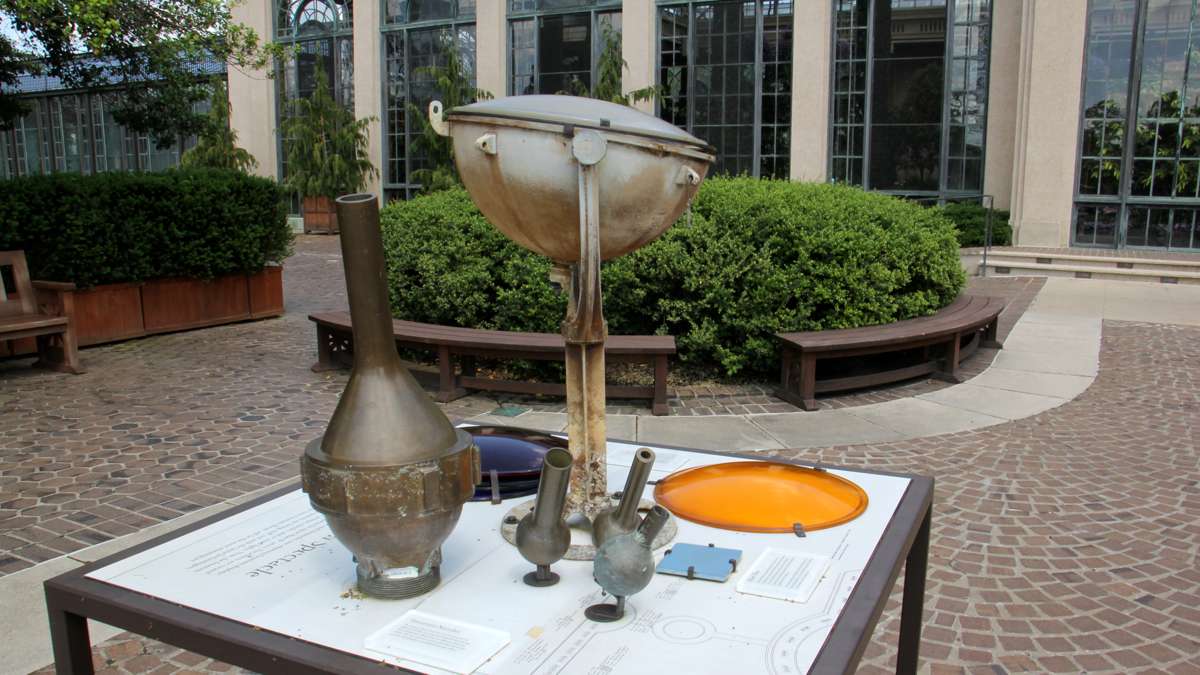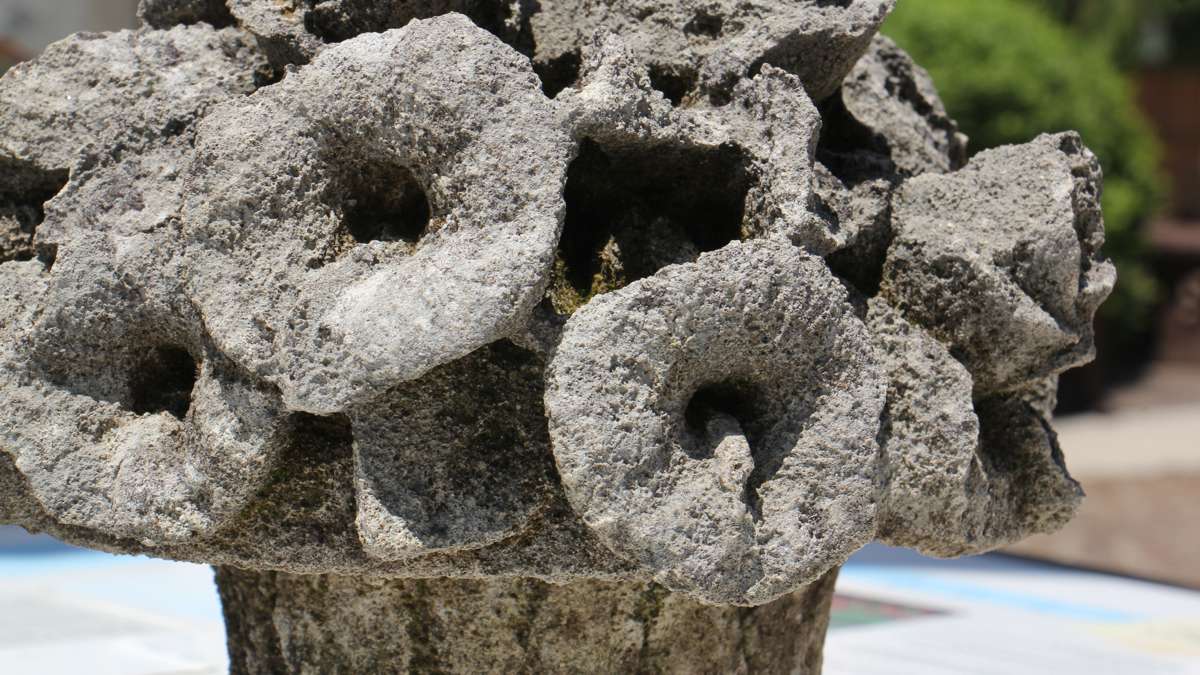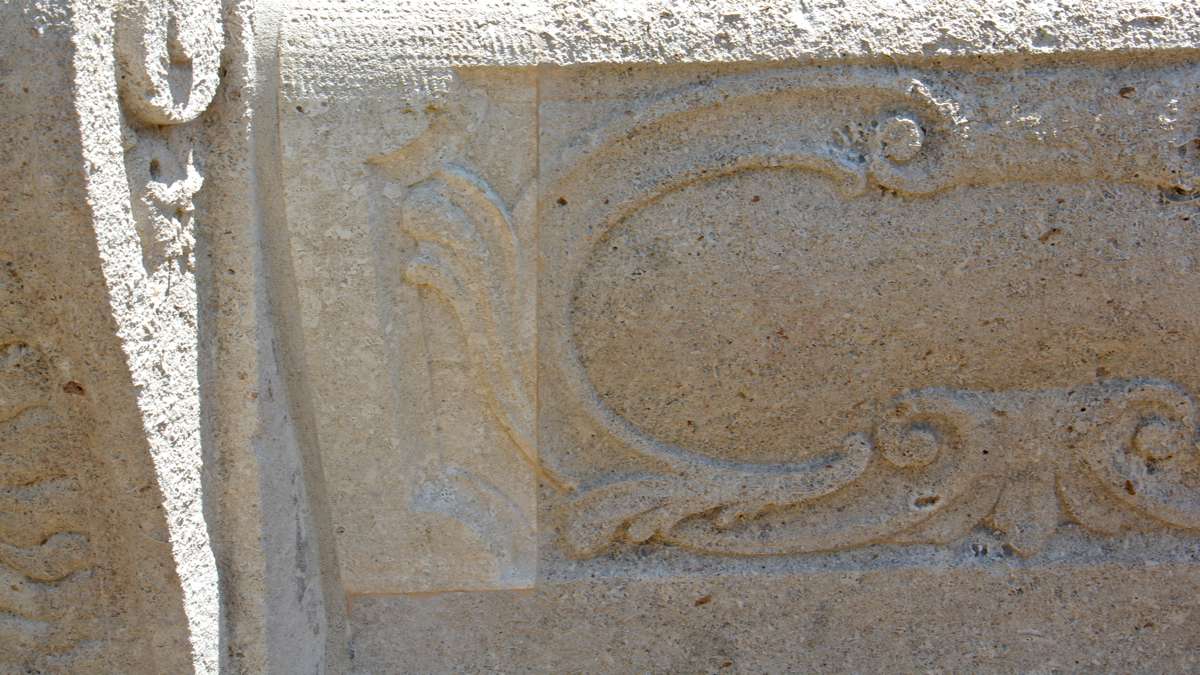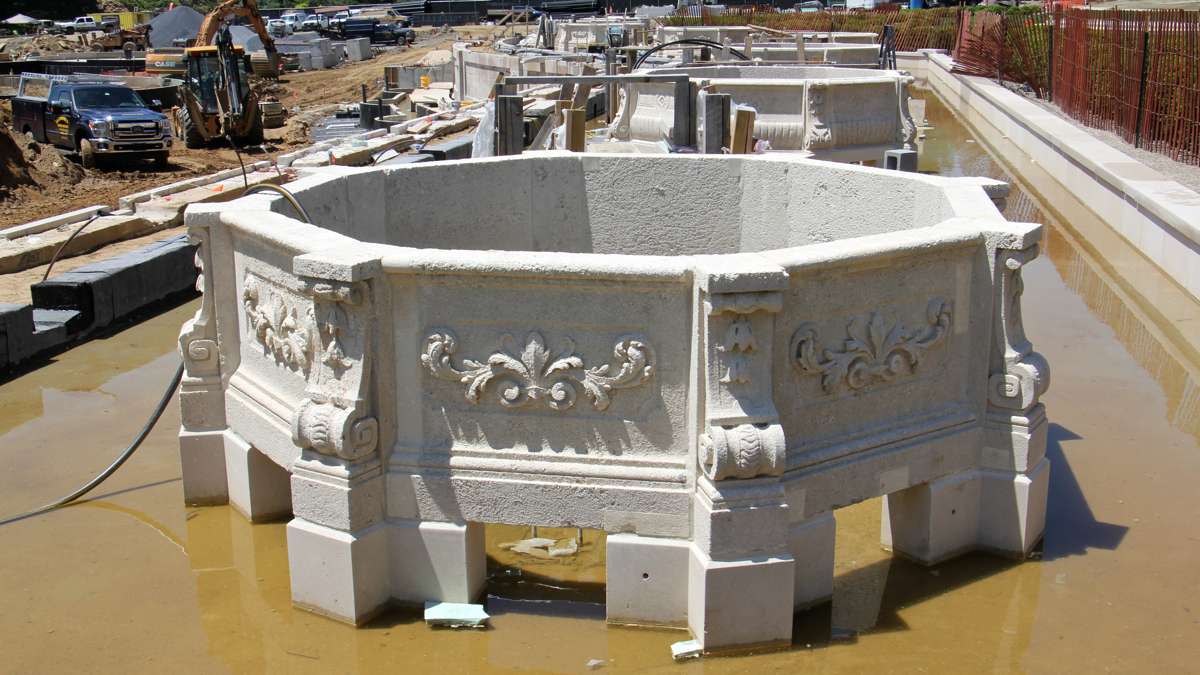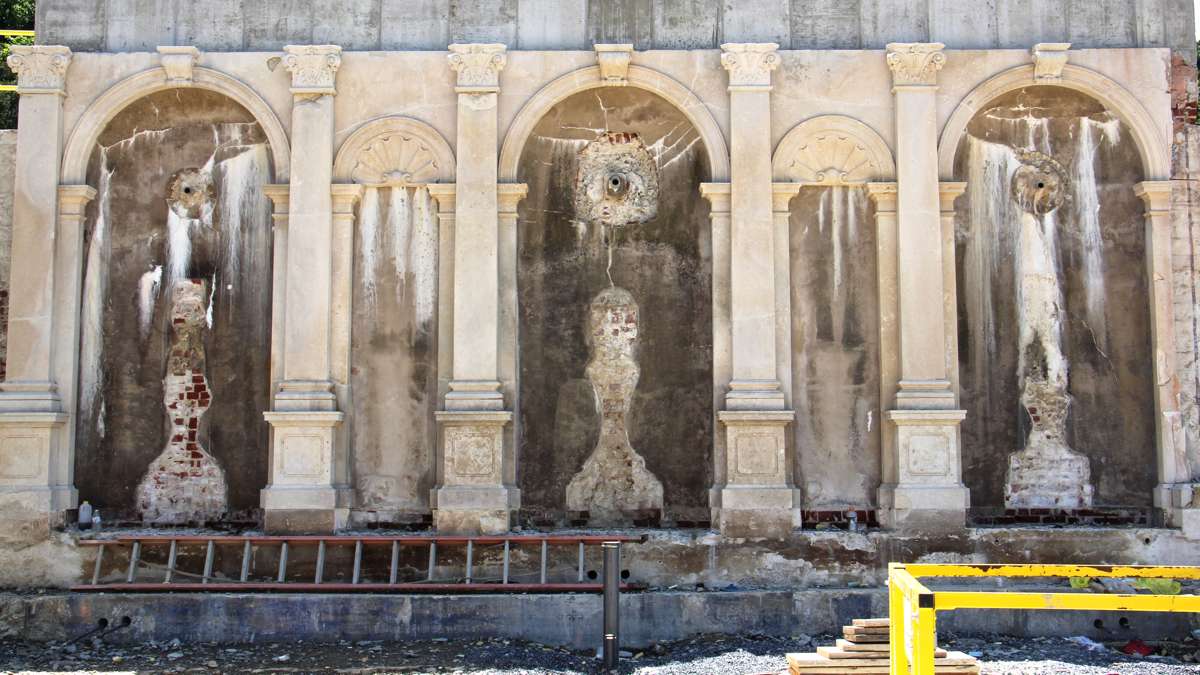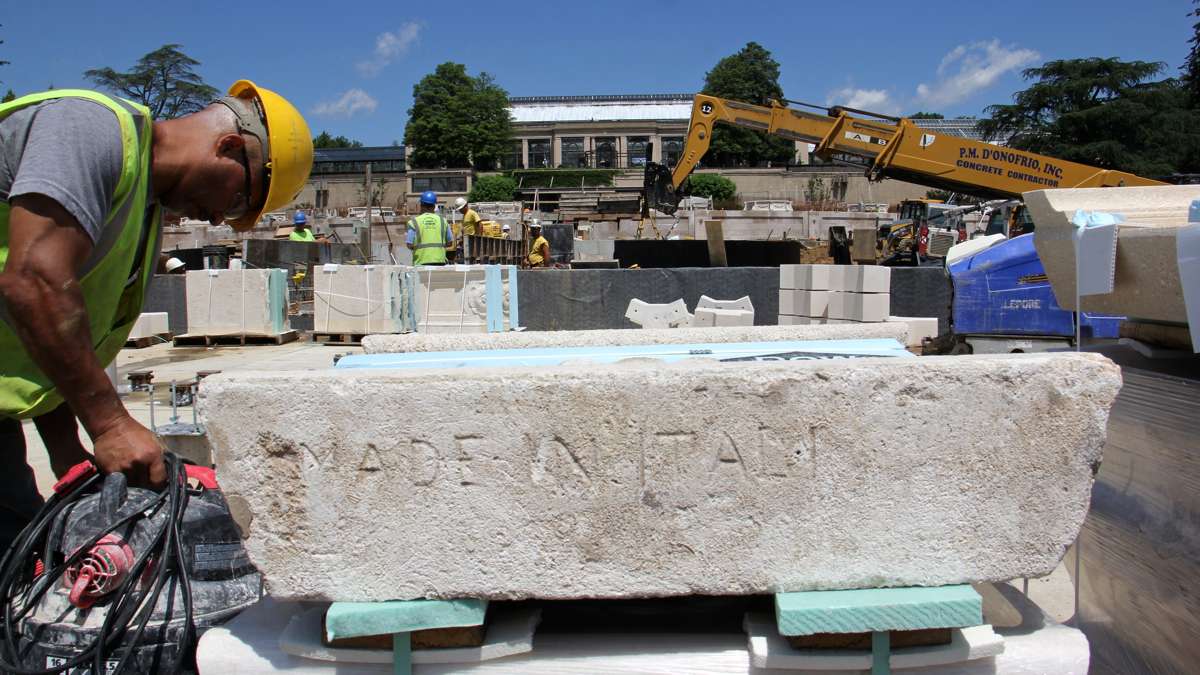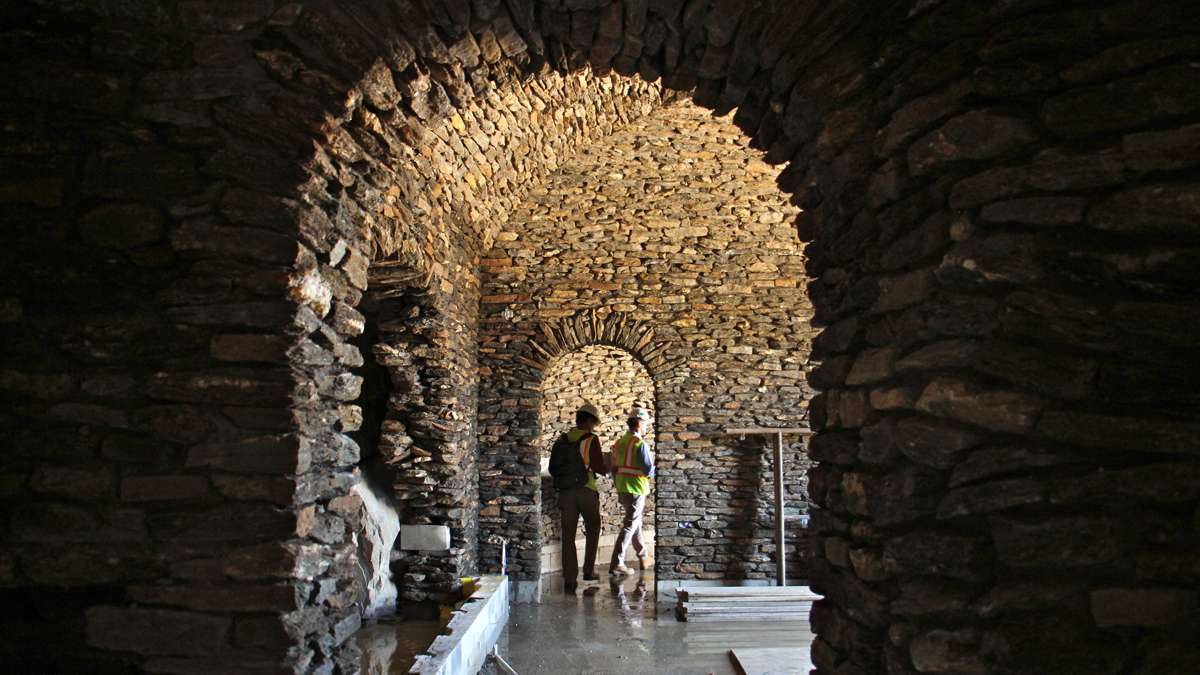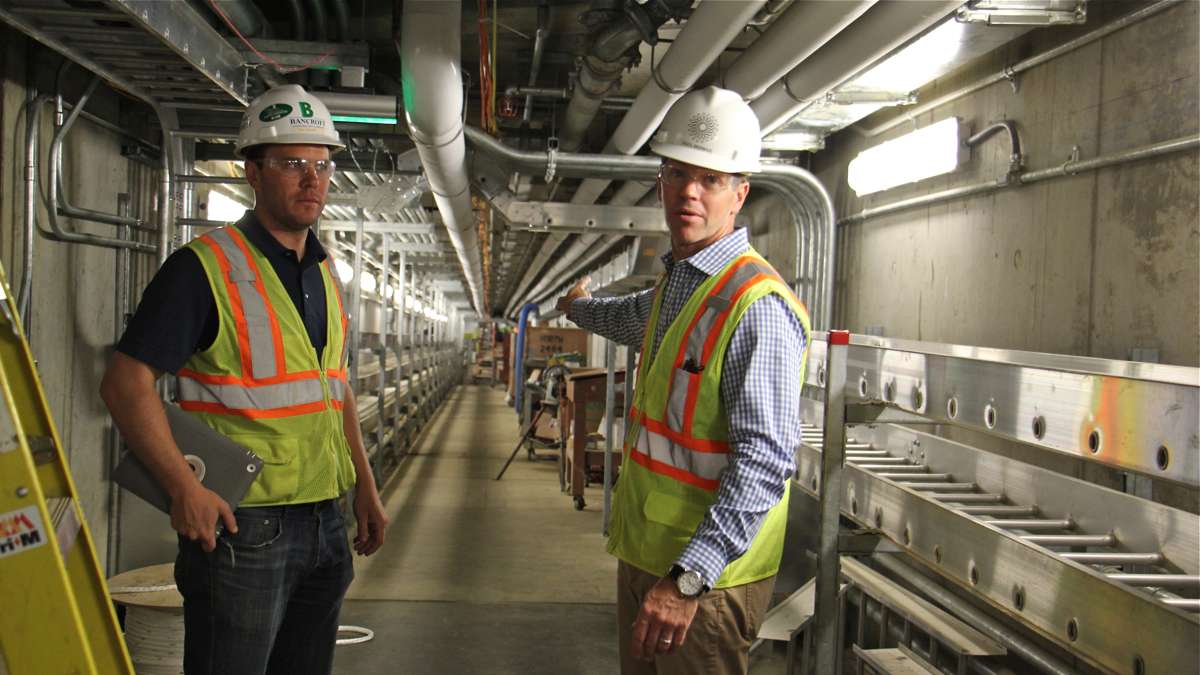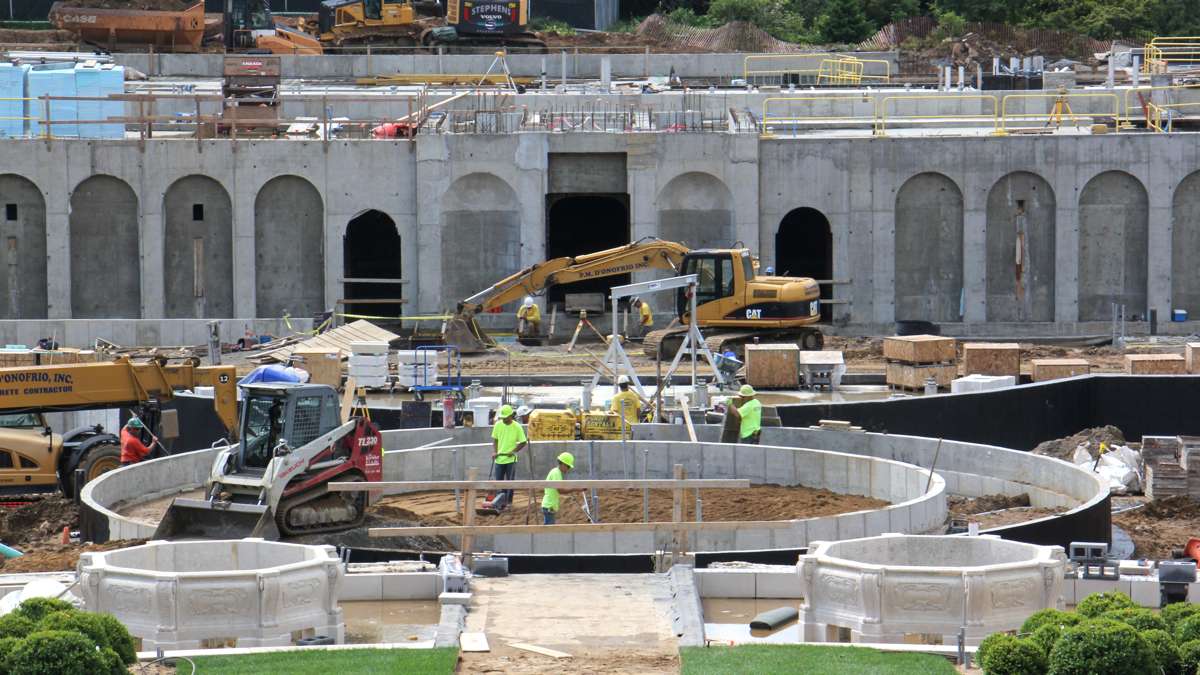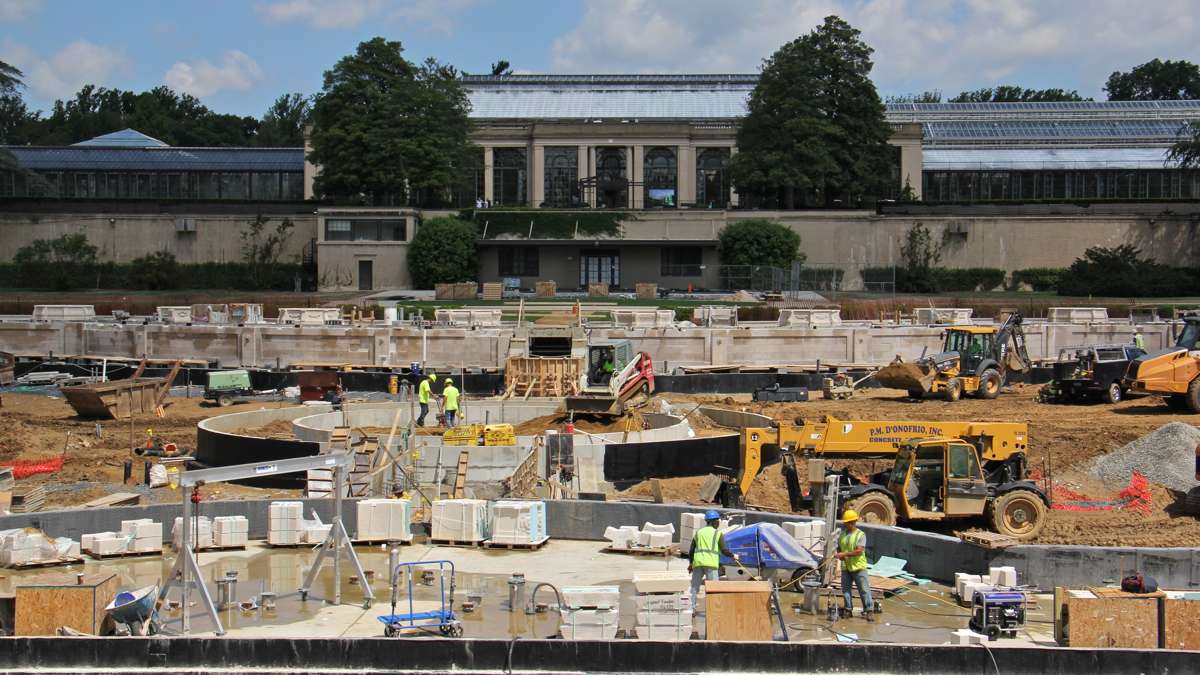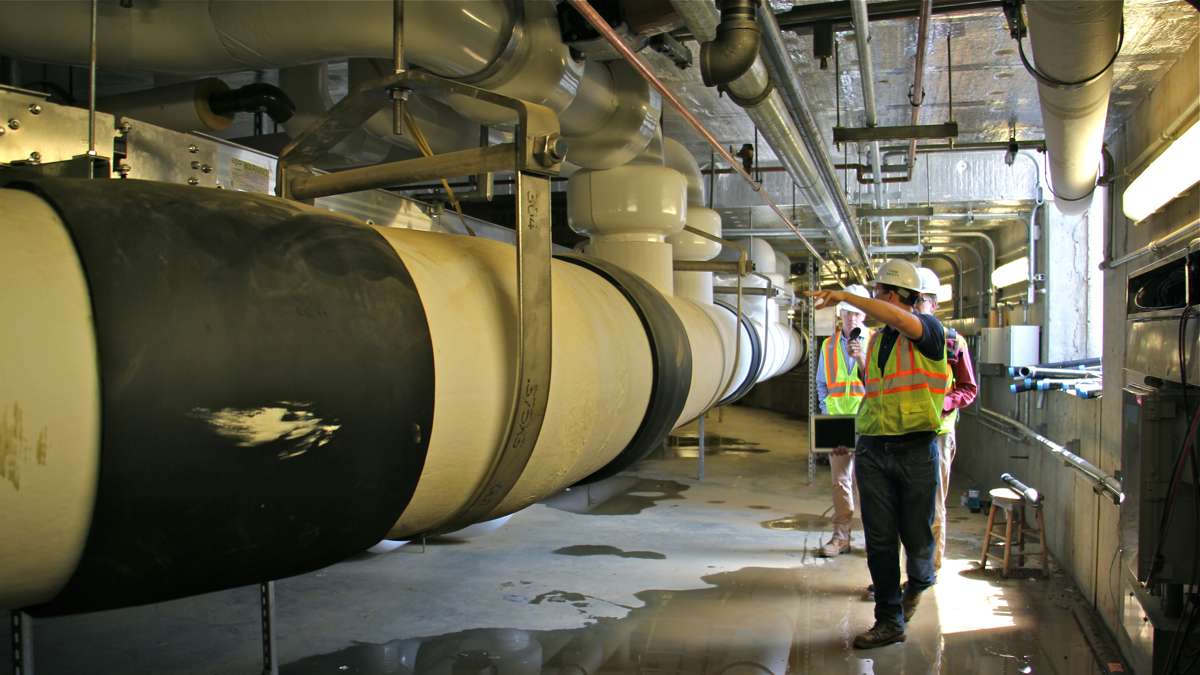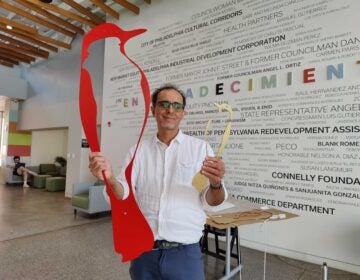Refreshing du Pont’s historic fountain garden at Longwood [photos]
ListenLongwood Gardens in Kennett Square, Pennsylvania, is getting a new plumbing system to the tune of $90 million.
It will animate the centerpiece of the historic estate, an 8-acre fountain garden, made in 1931 from 2,265 pieces of Italian limestone and 379 water jets.
The entire garden, covering more than 1,000 acres and designed by Pierre du Pont in the early 20th century, includes indoor conservatories, formal manicured gardens, and open meadows.
The heart of it all is the pulsing, spouting, splashing fountain garden.
“All of the other gardens were created first. While he was creating those, he was experimenting with the shape and form of this one,” said Longwwod’s executive director Paul Redman.
Du Pont, who served as president of the Delaware company and board chair, took his own spin on the classical water gardens of Italy. He personally designed the grounds’ hydraulics and horticulture.
But there was a problem. With hundreds of jets, dozens of pumps, and miles of pipe, something was always going wrong. Since all the engineering systems are buried underground, workers would constantly dig up the garden to fix breakdowns, in the process shutting down whole sections of the fountain garden or its entirety.
“We had to peel back the skin of the original garden, and excavate to install an entire network of infrastructure that never existed before,” said Redman. “There’ s a whole city underground here.”
Redman is in the middle of a massive construction project that has dug huge concrete tunnels underneath the fountain garden. All of the limestone fountain elements were disassembled and shipped out to be conserved, making way for the installation of ¼ mile of crisscrossing tunnels.
The tunnels were built large enough to drive a small truck through them, but instead are crammed with pipes and mechanical systems running water, air, and electricity throughout the fountain garden and nearby conservatory.
The garden’s original 18 pumps serving 379 jets have been replaced by 96 pumps supplying 1,700 jets. The new pumps are smaller and more redundant, enabling workers to shut off only small portions of the whole garden when maintenance calls.
One major improvement is the restoration of the South Wall, a concrete edifice with dozens of arched niches, each with carved sculptural elements spouting water — or they used to spout water. It hasn’t worked in almost 30 years.
Several new features are being added to the old fountain garden, including paths and access stairs, and an underground grotto with a waterfall inside.
Some of the new jets will accommodate both water and fire — propane lines mix gas into the fountain line, causing a dramatic burst of flame at the top of the jet.
“The flame doesn’t show up until the water column rises,” said Redman. “It looks like a flame is floating on top of the water jet.”
Although du Pont’s original engineering will be almost completely ripped out of the fountain garden, Redman said the garden’s historic intent will remain intact.
“He was a forward-thinking, innovative person, and we knew he would take advantage of the latest technology to get another 100 years out of this fountain,” said Redman. “We honored the intent by unstitching and stitching back together the same garden, but making it a little better.”
The fountain garden is expected to reopen in the summer of 2017.
WHYY is your source for fact-based, in-depth journalism and information. As a nonprofit organization, we rely on financial support from readers like you. Please give today.



